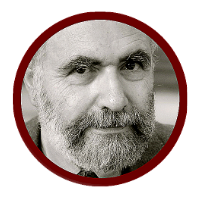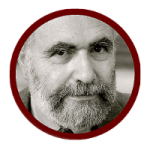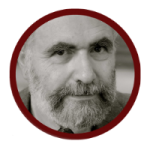The blueprint for Mandela’s « Rainbow Nation » was written in 1976 by Christiaan Barnard, the White South African pioneer of heart transplant.
Nelson Mandela will stay in history on two accounts. He will be remembered for acceding to his country’s presidency after more than thirty years in jail, including a twenty seven years uninterrupted imprisonment in Robben Island, Pollsmoor and other places. It happens quite often, of course, that rebels, dissidents or political prisoners turn into heads of state. One of the most captivating episodes of the Bible is the sudden promotion of Joseph, the Hebrew lad, from slavery and dungeon to the vice-royalty of Egypt. In the 20th century, such evil figures as Vladimir Lenin, Joseph Stalin, Adolf Hitler, Ahmed Ben Bella or Ruhollah Khomeini, became dictators after a few years in exile or jail. There was also the more palatable ascent of Jomo Kenyatta of Kenya, from British jail to a quasi-monarchic position, or the truly admirable cases of Lech Walesa of Poland and Vaclav Havel of Czechoslovakia, who started as dissidents and ended as democratic presidents. However, no leader to be, neither in the Holy Writ or in recorded history, stayed nearly so long in jail – or confinement – as Mandela.
Mandela will also be remembered for behaving, once in power and in spite of his prior ordeal, with utmost moderation and as a champion of national reconciliation. This had to do, in many ways, with his character and mindset. A Xhosa tribal prince, and a Fort Hare finely educated lawyer, he never suscribed in his early years to utopian or totalitarian revolutionary views – be it Black or Third World nationalism or Marxism -but merely demanded the implementation of human and civic rights, as defined by the successive Anglo-Saxon, Western and international bills and declarations. When, as the leader of ANC, the Black South African party, he eventually resorted to armed rebellion and terrorism in the late 1950’s and early 1960’s, he rationalized it as a legitimate option against an illegitimate apartheid regime, and looked for political and logistic support everywhere, including in Haile Selassie’s staunchly pro-Western Ethiopia.
Indeed, he finally stroke an alliance with Communism : he secretly joined the South African Communist party ; he knew that his closest underground advisor, Joseph Slovo, a White South African, was a Soviet agent ; he organized the ANC’s military wing, Umkhonto we Sizwe (UwS), along Maoist and Castrist lines ; and ANC itself became, once he was jailed and under Slovo’s supervision, a Communist front. But Mandela was not entirely happy with that and, while jailed at Robben Island, markedly disagreed on many issues with other, Marxist-minded, inmates like Govan Mbeki or Harry Gwala. He was clearly relieved to hear about the dislocation and fall of the Soviet Union and Communism in the late 1980’s, precisely at the moment he entered final discussions with the White government for a transition to a multiracial regime.
For all that, Mandela’s legend, while not a forgery, is not the full story either. He was not always as ethical or saintly or compassionate, for instance, as many people would have expected him to be. In 2000, human rights militants were shocked to learn that he, who as a prisoner had constantly benefited from foreign sollicitude, declined to intervene on behalf of thirteen Iranian Jews that had been jailed on forged charges and were in risk to be sentenced to death, on the ground that he could not interfere with a sovereign country’s judiciary. But the main fact about the real Mandela is how much he owed to the White South African regime he fought and finally succeeded.
First, he owed White South Africa his life. Other regimes at about the same time – think of the Communist countries, the Arab tyrannies, Khomeini’s Iran, or even Argentina in the late 1970’s – used to kill insurgents or even opponents at will. South Africa was a bit different. However ruthless the apartheid regime was, and however nasty many of its provisions were, it operated more often than not within legal limits. In the 1950’s, Mandela was charged for « high treason » and jailed ; some of the charges were however dropped as unfounded or undocumented ; some of the judges that were about to try him were deemed to be biased by his lawyers and duly removed ; and a court in Pretoria finally pronounced him not guilty in 1961. In 1962, he was arrested again, charged for comparatively minor offenses and sentenced to five years imprisonment. In 1963, however, the South African police stumbled upon a trove of UwS documents and was able to produce hard evidence of Mandela’s involvement in terrorism and conspiracy against the government. Only then was Mandela sentenced, after lengthy hearings, to life imprisonment.
Even as a convicted rebel, Mandela was much better treated by the apartheid regime than would have been the case in other countries. He was to spent eighteen years at Robben Island, an penitentiary colony off Cape Town. For three years, from 1964 to 1967, conditions were very harsh. They improved steadily over the following years. Mandela was allowed to read, study, learn languages (including afrikaans, the White rulers main language), work for an academic degree, debate with other inmates. He was visited by his family, by South African and foreign political VIPs, and even by members of the South African government. From the the mid-1970’s on, he was able to correspond with other Black anti-apartheid leaders. In 1982, he was transfered, along with other ANC members, to the much more comfortable Pollsmoor prison, also in the Cape area. In 1988, he was moved again to a third compound, the Victor Verster Prison, where he enjoyed many privileges – his own house, a valet, a cook, a private swimpool – and was in fact groomed for a new political life.
For it is the White South African government of the apartheid era that engineered South Africa as we know it now : the « Rainbow country ». And that picked up Mandela as the main tool for such a transformation.
While White supremacy and racial separation had existed even previously in South Africa (as in most Anglo-Saxon countries, including the United States), the apartheid, or « separate development », regime started for real after WWII. The Afrikaners, a nation created by strictly Calvinist Dutch and Huguenot settlers in the 17th century, were then the largest White group in the country. Their main party, the National Party (NP) won an absolute majority at the predominantly White Cape Town parliament in 1948. With a twofold mandate : protecting the Afrikaner culture and language, within the White South African community, against Anglo-Saxon dominance ; and strenghtening racial separation along systematic lines.
Some fifteen or twenty years later, however – about the time Mandela was convicted -, the Afrikaner elite understood that the end of classic colonial rule in the rest of Africa made apartheid unworkable in the long run. The verligte (« enlightened ») school was prepared to drop racial segregation altogether. The verkrampte (« hardliners ») had in mind more complex projects, from granting independance to the Black « homelands » to a loose confederacy of ethnic States or communities.
In 1975, Willem Abraham de Klerk, a leading verligte intellectual, published a stunning self-portrait of the Afrikaner Volk (« ethnicity »), The Puritans in Africa (http://www.amazon.com/The-Puritans-Africa-Story-Afrikanerdom/dp/0901720712/ref=sr_1_1?ie=UTF8&qid=1387309544&sr=8-1&keywords=willem+de+klerk+puritans+in+africa). He made clear in the first place that « apartheid would have been anathema to Calvin » and then elaborated that according to the great 16th century Reformer, « there was no Utopia : human society was always a provisional society, always renewing itself ». In other terms, apartheid could be countenanced as a transitory arrangement only, and had to give way soon enough to other means to ensure law, order – and incidentally the survival of the « Volk ».
One year later, in 1976, Christiaan Barnard, the Cape Town based pioneer of heart transplants, published South Africa : Sharp Dissection, another verligte manifesto
(http://www.amazon.com/South-Africa-Dissection-Christiaan-Barnard/dp/0916728021/ref=sr_1_2?ie=UTF8&qid=1387110918&sr=8-2&keywords=christiaan+barnard+south+africa). Whereas de Klerk explained why South Africa could not go ahead with apartheid, Barnaard focused on how to proceed. He suggested that South Africa move away from Westminster style two parties democracy, and settle for what was at the time the standard political system in most of the newly Black independent countries : the one party system. That would allow, in his opinion, for a new, multiracial, leadership. « I have no problem with a Black president, as long as he is a good president », Barnaard insisted.
It took about fifteen more years for South Africa to dismantle apartheid. From 1978 to 1989, the country was led by Pieter Willem Botha, a forceful « centrist » prime minister and then president – not quite a verkrampte and not quite a verligte – , who attempted to establish a « federalist », « communitarian », democracy, rather than a fully mutiracial system. Botha needed partners in the Black community : he entered in talks with many people, including the Episcopalian bishop Desmond Tutu and jailed ANC leaders like Mandela, but could not convince any of them to cooperate with him. Still, Botha took the decisive step to transfer Mandela to Peter Verster Prison and thus, for all practical matters, to help him adjust to his future role as a national leader.
In 1989, Botha’s health deteriorated. He was replaced by Frederick Willem de Klerk who, in effect, implemented the Barnaard solution. The main difference with the original 1976 plan was that the new government would not be based on a single multiracial party but rather on an informal alliance between a reconstructed ANC and a reconstructed National Party. That sounded much more like classic, « one man, one vote », democracy, and Mandela, whould had been formally released from imprisonment, had no more reservations. The litmus test for the new dispensation was the brutal suppression of Far Right White protests by the still White South African police in Ventersdorp, in August 1991. More violent clashes and massacres occured all over South Africa, most of them between ANC militants and other Black activists, until the multiracial election of 1994 that consecrated Mandela as the new president, with F. W. de Klerk as vice-president. Both men had been awarded the Nobel Prize for Peace in 1993.
Ever since then, South Africa has been known as « the Rainbow Nation », and most credit has gone to Mandela. Both assertions are largely unfounded. Still, the compromise over which Mandela presided quite gracefully in the end of the day has helped South Africa to survive, and to pass as an emergent world power, while so many other countries in Africa, including some of the potentially richest ones, have descended into chaos.
Michel Gurfinkiel is the Founder and President of the Jean-Jacques Rousseau Institute, a conservative think-thank in France, and a Shillman/Ginsburg Fellow at Middle East Forum.
© Michel Gurfinkiel & PJMedia, 2013


